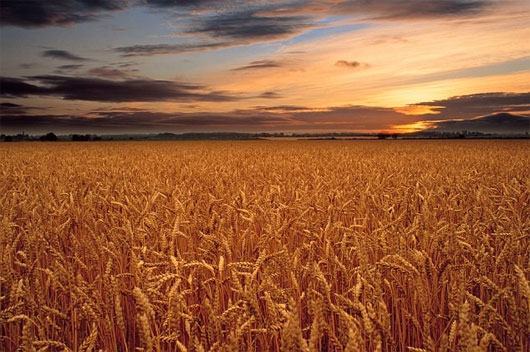Greenhouse effect reduces crop productivity
Recent research shows that increasing the amount of CO2 in the air significantly affects crop productivity.
>>>Japan proceeds to 'bury' CO2 in the seabed
Ordinary plants create nutrients by converting nitrates into proteins. However, CO 2 is thought to be the 'culprit' that inhibits this transition.

Environmental pollution leads to an increase in CO 2 which is thought to cause food to lose nutrients.
Professor Arnold Bloom of the University of California's Plant Science Institute and his colleagues conducted tests on wheat samples to see how the CO 2 affects. The study lasted from 1996 and 1997 at Arigultural Maricopa Center near Phoenix, Arizona.
The results showed that CO 2 concentration has slowed the rate of nitrate assimilation. CO 2 significantly reduces the nutritional value of plants.
Previously, scientists always questioned and sought ways to explain the quality decline of crops. And so far, this study is considered to be the first discovery to denounce CO 2 as a cause of crop loss in nutritional quality.
Other group studies also showed that protein levels in wheat, rice, barley and potatoes decreased by an average of about 8%. And with the amount of CO 2 continuing to increase in the coming years, food quality will continue to decrease by about 3%.
With such a complex situation of environmental pollution, the only way to preserve the nutritional value is to use nitrogen fertilizer for plants.
- The greenhouse effect can prevent life from living outside of Earth
- Use algae to prevent drought and increase crop productivity
- Greenhouse effect
- Cows also cause a greenhouse effect
- More than 300 million people are suffering from greenhouse gases
- Africa increases crop yields through termites and ants
- The greenhouse effect slows down due to atmospheric pollution
- Who is the 'culprit' first causing the greenhouse effect?
- Night work reduces productivity
- Bad soil because of the greenhouse effect
- Forest fire reduces the northern hemisphere temperature
- NASA demonstrates a model of CO2 greenhouse gas
 Is the magnetic North Pole shift dangerous to humanity?
Is the magnetic North Pole shift dangerous to humanity? Washington legalizes the recycling of human bodies into fertilizer
Washington legalizes the recycling of human bodies into fertilizer Lightning stone - the mysterious guest
Lightning stone - the mysterious guest Stunned by the mysterious sunset, strange appearance
Stunned by the mysterious sunset, strange appearance